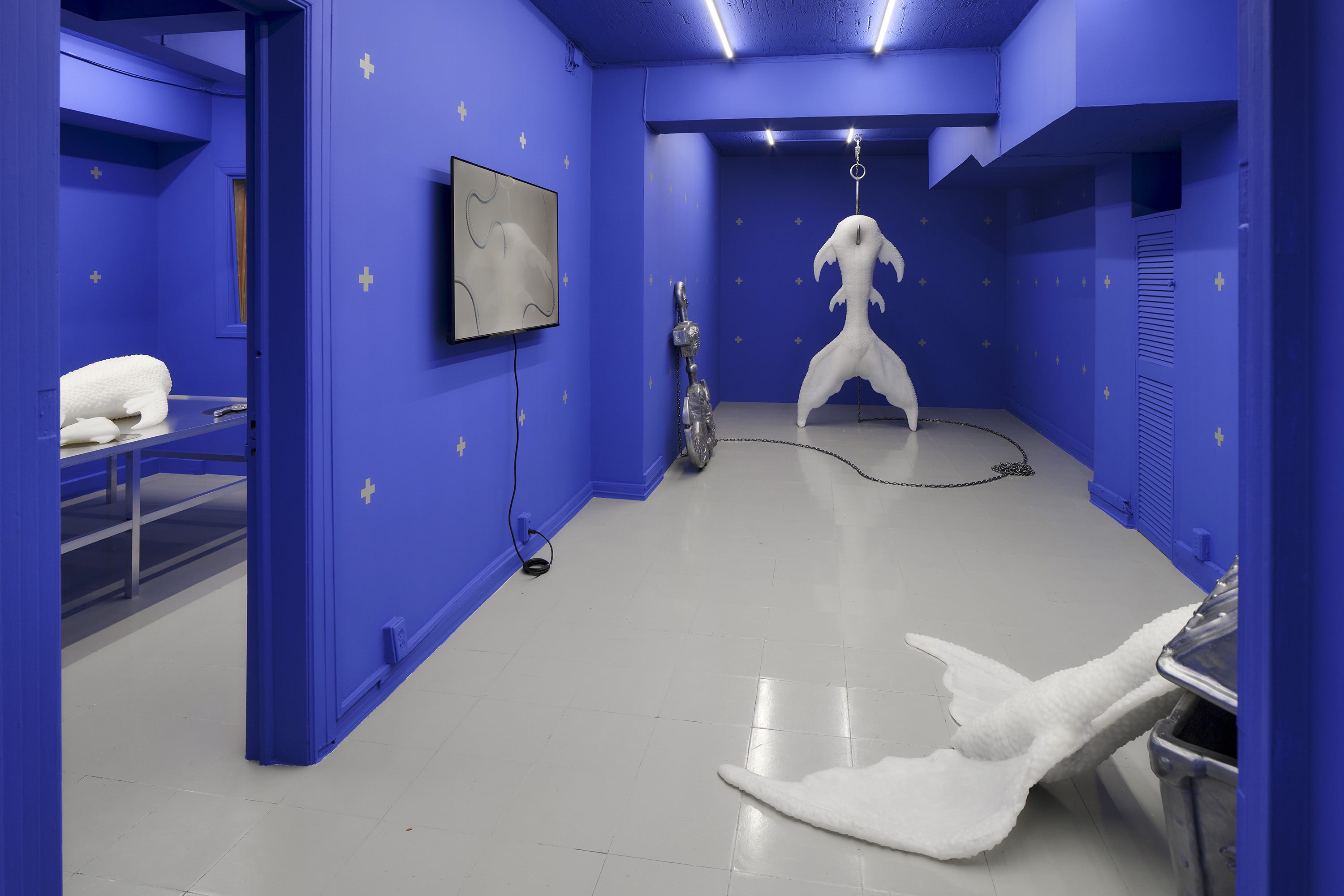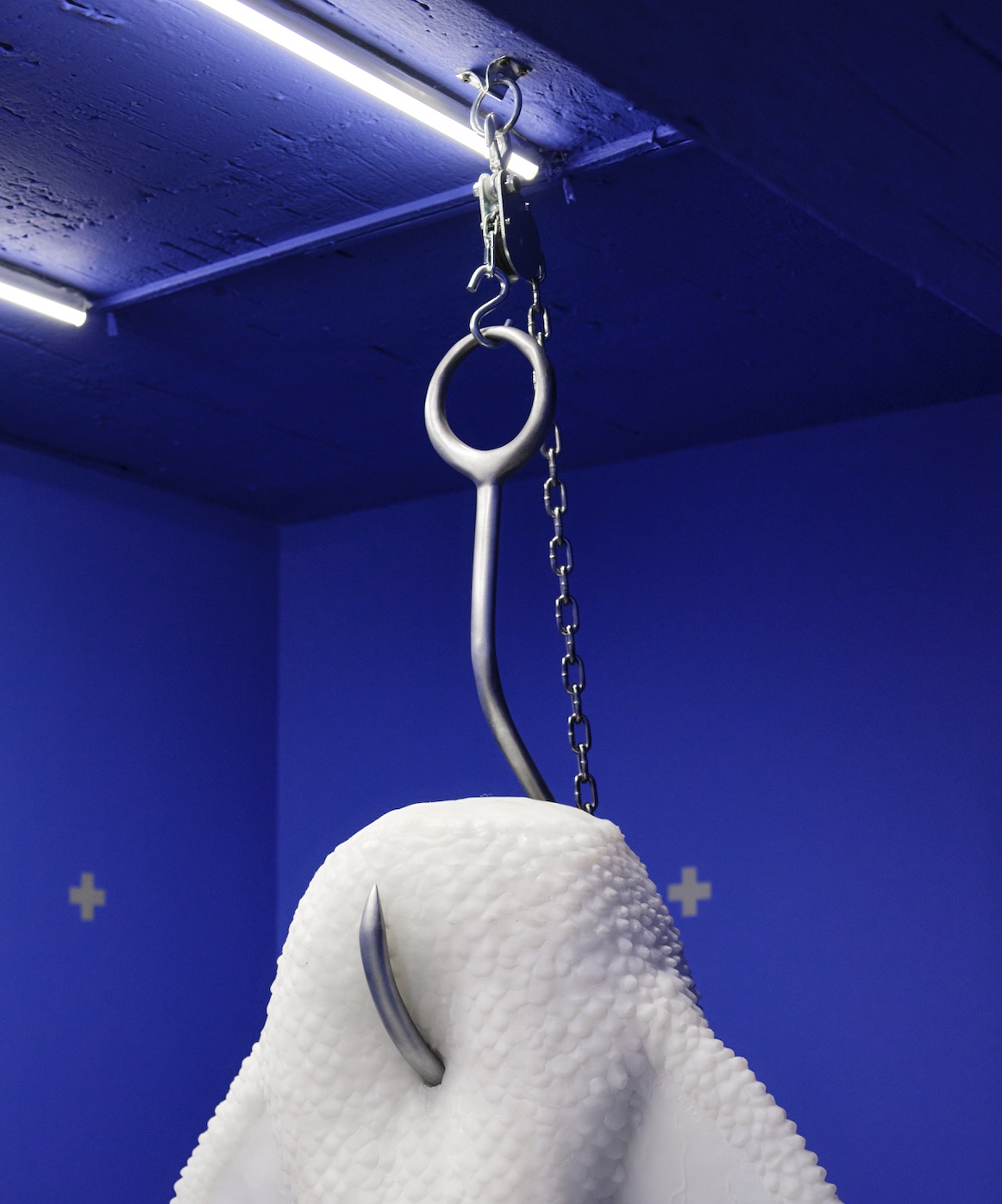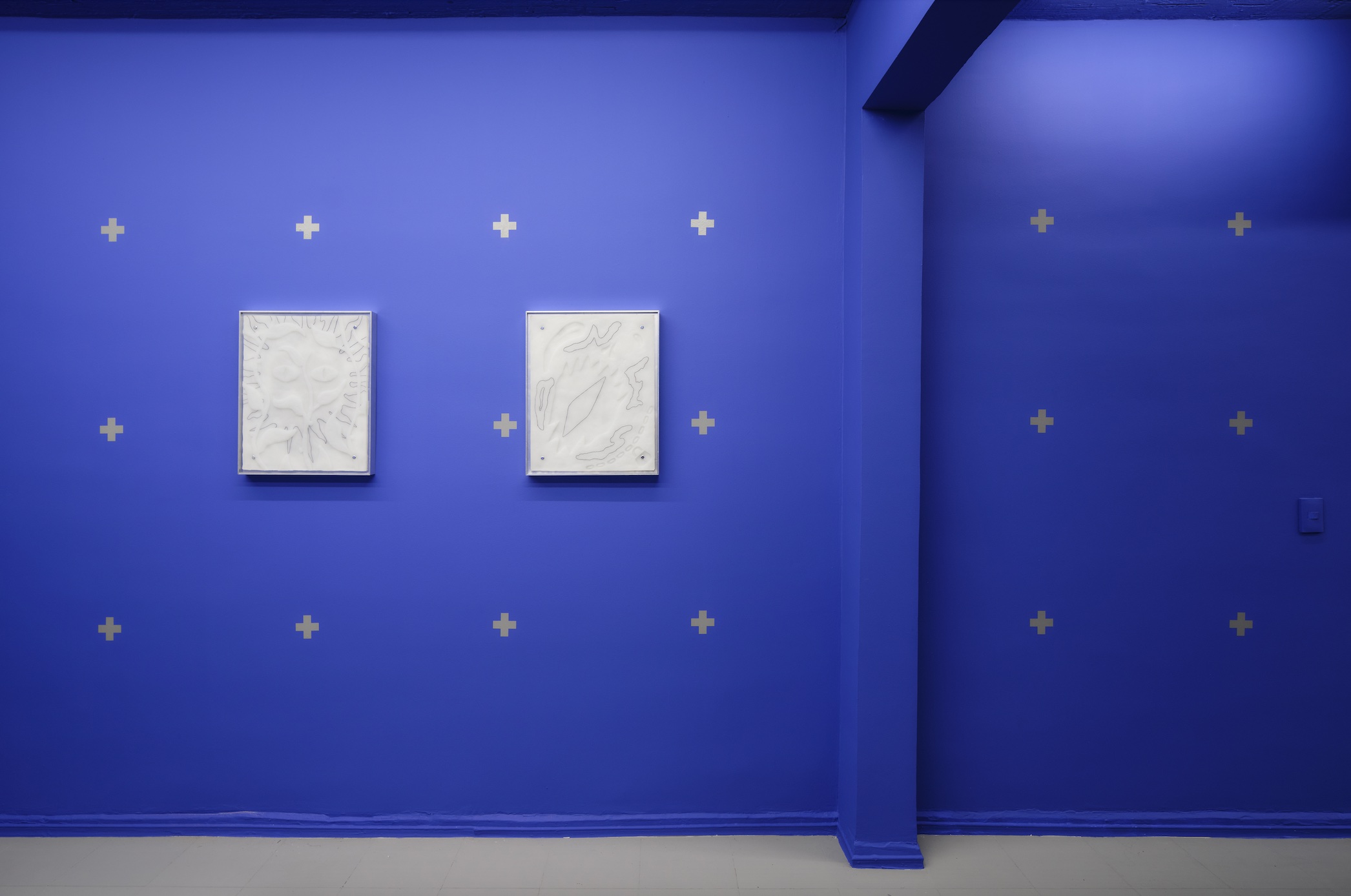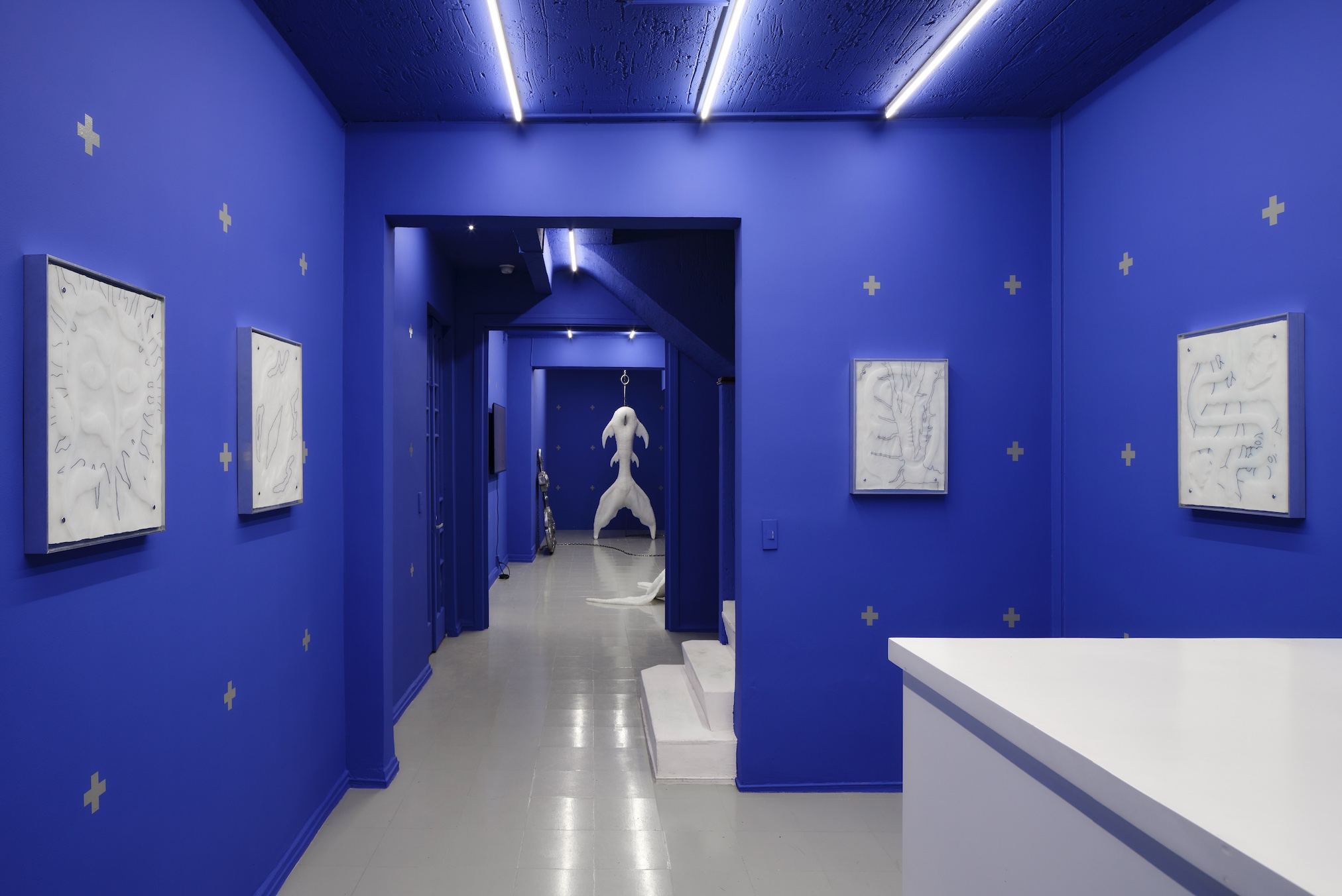
Review
Narrative justice in marine tropes: 'Tank' by Andrew Roberts
by Paulina Félix Cunillé
Reading time
5 min
Upon entering Tank, the second show of Andrew Roberts at Pequod Co., I had one question in my mind: would his silicone pieces tell me something about pain? Translucent silicone abounds in the space, between large-scale sculptures and maritime illustrations. Roberts’ research gathers information about the ocean as it has been violated by industrial violence and inserted in science fiction, dating back to the myths created by the colonizers of the Americas. In this new series of work, pain appears by dismembering ocean mythology. Known for his iconic silicone zombies featured at The Whitney Biennial last year, Roberts now presents marine spectra — some of them mutilated — as props.
Tank is presented as both an autopsy tank and a filming studio, where pale sea monsters and the artist's research are dissected. The first thing that stands out in the exhibition, in addition to the blue Chroma Key painted walls, is the large-format sculpture in the background, Paroxysmal Positional Vertigo (2023), in which a headless siren hangs from a hook like prey. Faceless and centered as an experiment, this paralyzed monster speaks to us of a colonial pain caused by the framing of the New World (America) as dangerous and only worthy of exploitation. Addressing these myths fabricated by colonizers, Roberts identifies racial and class denominators in American monsters. For example, one account describes the sirens of America as ugly in contrast to the European siren, becoming a tool of terror towards inhabitants.

Roberts’ pieces transform these myths by eliminating any distinction through the absence of any identity or color. Consequently, this exhibition mixes myth with reality. The reality is that the Hollywood film industry has benefited from Mexican bodies of water (such as Baja Studios), and marine life has been subjected to exploitation by hunting and has become collateral damage of the international oil industry. Through this simulation of myths and spectra, Roberts uncovers the skeletons in the closet from the colonial narrative.
Although Roberts declares his series of work enacts speculative fiction, these pieces share similarities with Saidiya Hartman’s concept of critical fabulation, as they rewrite a possible alternative to the exploitative past. Hartman proposes that narrating counter-stories of slavery is inextricably linked to the writing of the history in the present day, hence creating stories for the Africans killed and whose lives were obscured by the white hand.* In Tank it is not slavery, but rather the history and mythology of the ocean. Through it, Roberts operates a rewrite of mythology as a justice method within a cinematographic universe. The silicone bestiaries of 50 x 45 cm, all titled Silicone tracking marks, which begin and end the show, depict the previous by defying the stereotypes of horrible monsters of the New World. For example, Silicone tracking mark: solar seaweed shows physical attributes of a solar algae that could be found in a cartoon as its outline is soft. Its three stipes camouflage part of its solar structure. Its orb — unlike everything else that is silicone — is tattooed in black ink. Some blades emanating from the stipe assimilate a mouth or a mustache. Its eyes, located on the upper part, have a sinister expression as its vertical pupils resemble those of a snake. Not your typical hideous sea monster.

Roberts implies once again the colonization of mythical knowledge by placing these pieces inside a metal frame, like a surgical tray, emphasizing the act of observation of the Other. The coldness of the metal that surrounds the pieces evokes a distance or lack of emotion in the scientific method promoted by the Eurocentric epistemic violence, in which objectivity must remain. Playing between the decolonial role (rewriting history) and the colonizer role (dissection), justice overflows. Roberts displays his marine monsters as tender and dangerous, eliminating the stereotypes of a traditional monster. These props hence become avengers of the fictional ocean in a possible movie.
Tank’s pain is silent as there isn’t any blood nor sound to be found related to it, referring to the irreversible past. Nevertheless, the short story that accompanies the exhibition (available online) gives voice to the exploited as a reconstruction of this pain. Narrated in first-person by an unknown marine animal/monster, a single character describes the last moments of its fellow friends. They end in a disturbing squeaking, caused by oil devouring their skins, reducing them to ashes. The narrator survives and wakes up in a blue tank: the exhibition. Upon seeing a mechatronic being lying next to him, the character confuses it for a friend thus accompanying the inert object while embracing death. The text is pessimistic since there is no way out nor a happy ending. Although the character mentions feeling happy before the oil disaster, he does not express any feelings again during the story, as he shares in a state of shock the following: “My friend has died.” In these sentences, it is unavoidable to ask about the impact of colonization within the marine imaginary, where pain is normalized (not far from reality).

Thus, Tank coldly exposes new versions of myths and characters, that pessimistically reminds us of the injustices enacted by the colonial power and, in parallel, what the ocean has had to suffer. However, by creating decolonial voices, the artist refers us to a critical fabulation from the periphery and exploited bodies that uses pain, a by-product of the colonial narrative, as platform. Though focused on past events, Roberts’ spectra have the potential to visualize the myths existing in the present and perhaps talk about a future for the ocean.
— Paulina Félix Cunillé
The show runs through June 10th, 2023.
*: Saidiya Hartman, “Venus in Two Acts”, Small Axe, No. 26, Volume 12, June 2008, 1-14. Published by Duke Press.
Published on May 31 2023